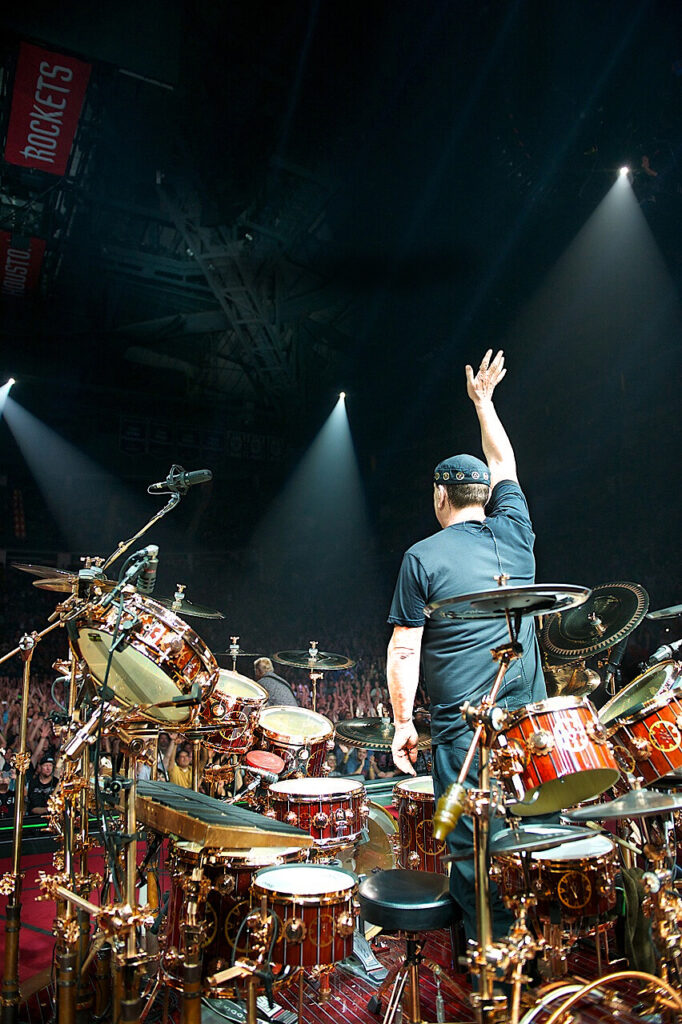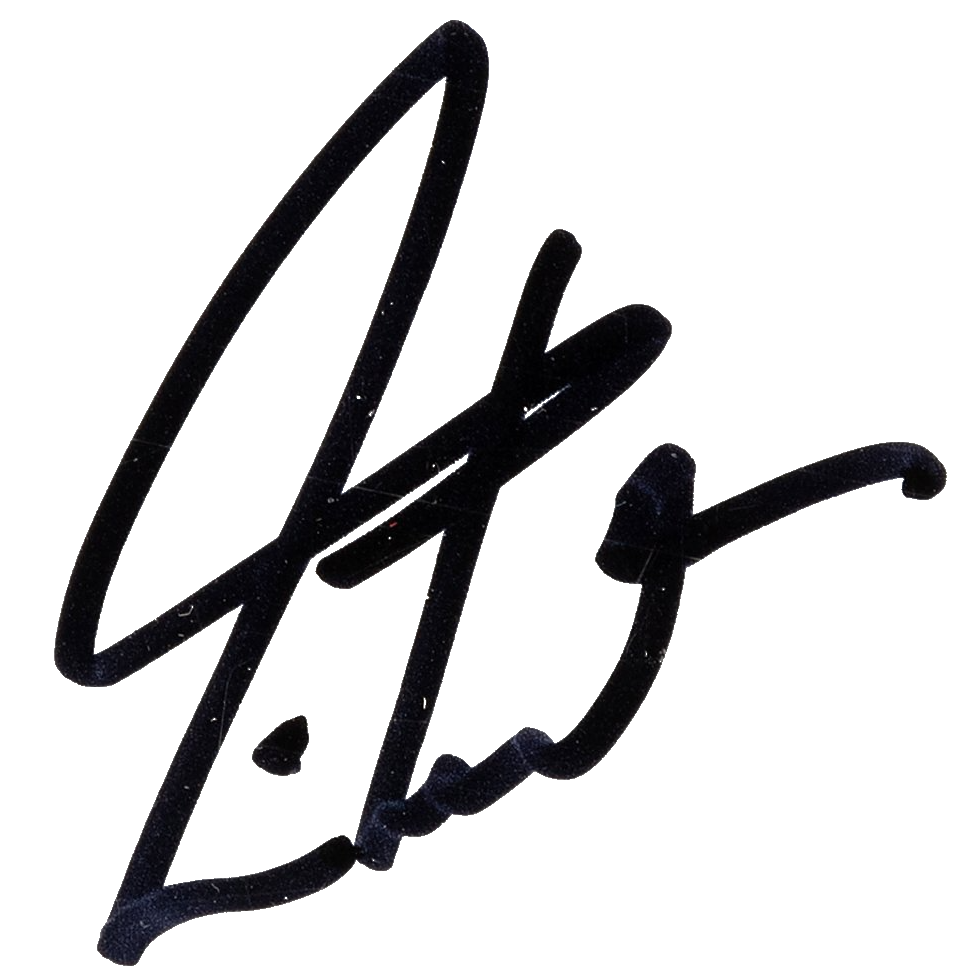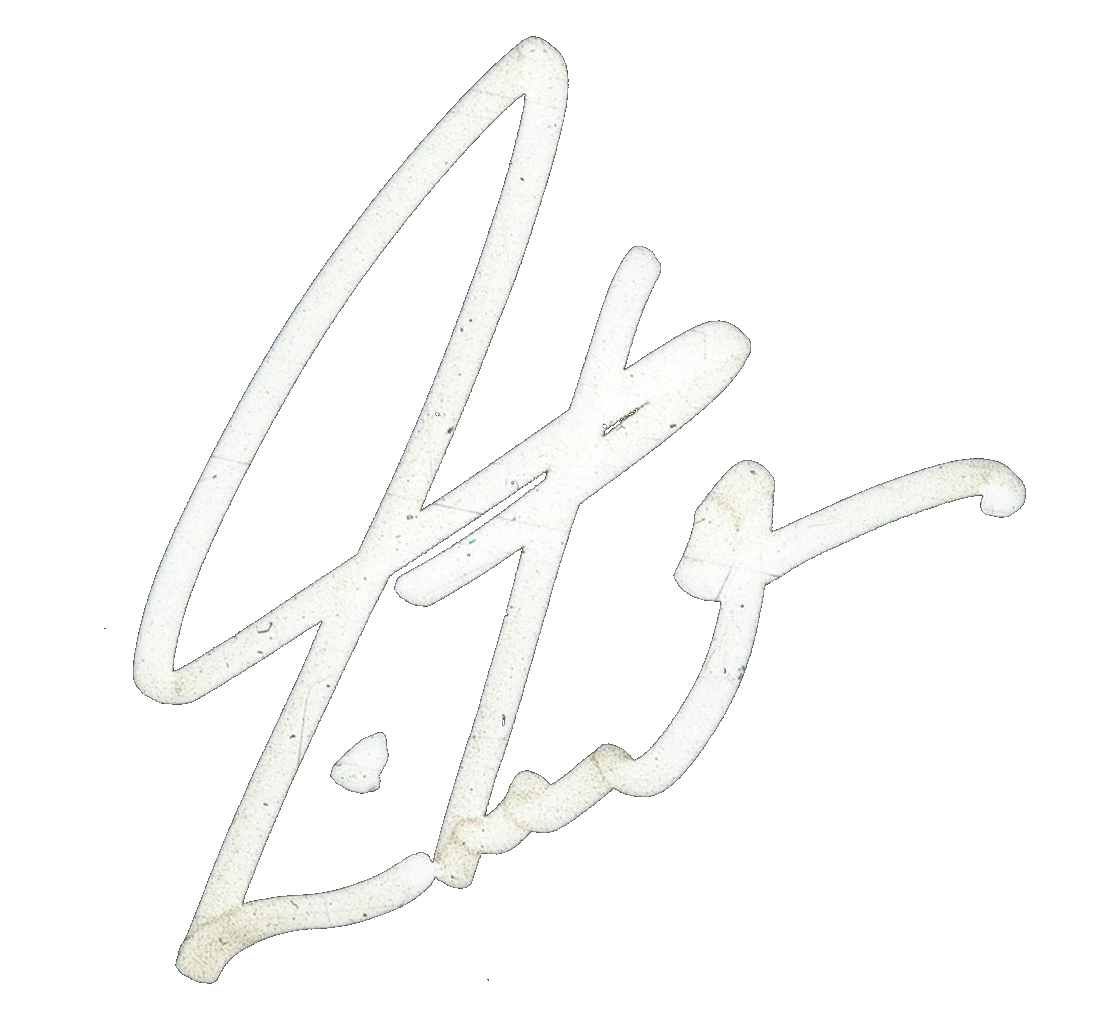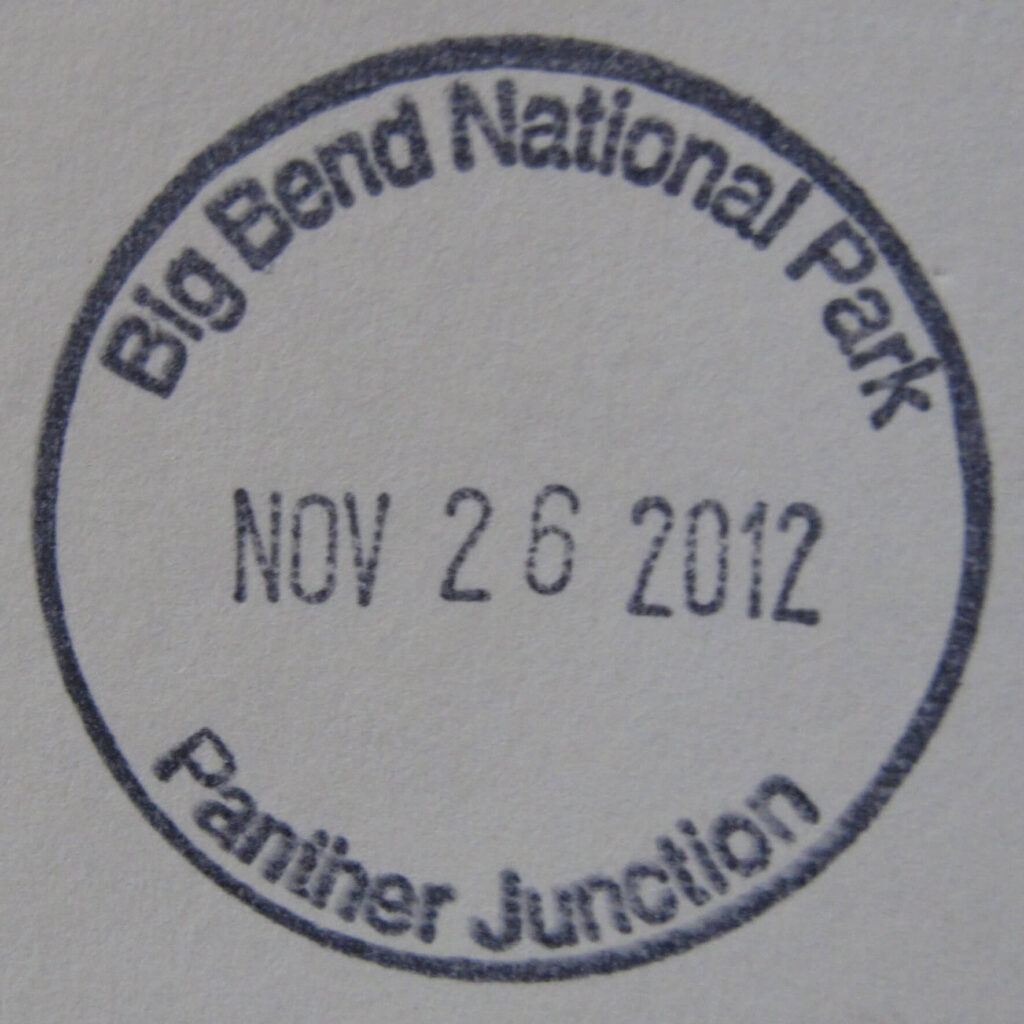
Back in January, when manager Ray first sent me the proposed itinerary for the tour, there were two features that immediately stood out to me. They were not the cities where I would be playing shows, because where I work doesn’t matter much to me — not as much as how I get there. So my eyes tend to be drawn to the days off, and especially if I see two of them in a row. Those rarely come along (not “economically sound”), but can allow me to stretch my travel range between shows to some amazing journeys. One perfect example from a couple of tours ago: two days off between Phoenix and Albuquerque — the first day spent riding through Arizona to Monument Valley for the night, then through Colorado to Taos, New Mexico, for the second night. In this Bubba’s touring life, it doesn’t get much better than that.
This time, I was looking at two days off between Chicago and Detroit, which suggested interesting possibilities around the Upper Peninsula of Michigan. (That eventually became our sublime day off on Mackinac Island — see “The Better Angels.”) The second pair of free days lay between Phoenix and Dallas, setting me up in the heart of the West. My first inclination was to aim for Southern Utah, with its unparalleled national parks — Bryce Canyon, Zion, Capitol Reef, Canyonlands, Arches — and one of my favorite destination towns, Moab. (Not least because it’s in the middle of all that.)
But . . . it was November, and all of those places were cold, and potentially snowy. Another always-welcome candidate would be Grand Canyon National Park, but its low temperature at the time was 16 degrees. Oh, no. I would need to think “South.”
That spin of the compass needle directed me right to Big Bend National Park, way down deep in Texas.
For those two days we would be joined by a guest rider, Brian Catterson, longtime friend and veteran moto-journalist. (Like a number of my friends, we began as a “mutual appreciation society:” I liked his work; he liked mine.) As a traveler, Brian is a calm, competent companion (there goes that alliteration again), and had made an appearance on every tour since Vapor Trails, in 2002. Now just past fifty years of age, he had spent his professional life immersed in the sport and documentation of motorcycling. He was experienced in every kind of two-wheeled action, from extreme race machines to the light and agile motocross bikes of his youth. (We could have used bikes like that in the Arizona Outback!) Lately, after retiring as editor-in-chief at Motorcyclist magazine, he had returned to motocross bikes, as a hobby — or maybe a career. (My invented diner placemat of ads on Bubba’s Bar ’n’ Grill listed “Catterson’s Small Engines,” and we joked that it was coming true.)
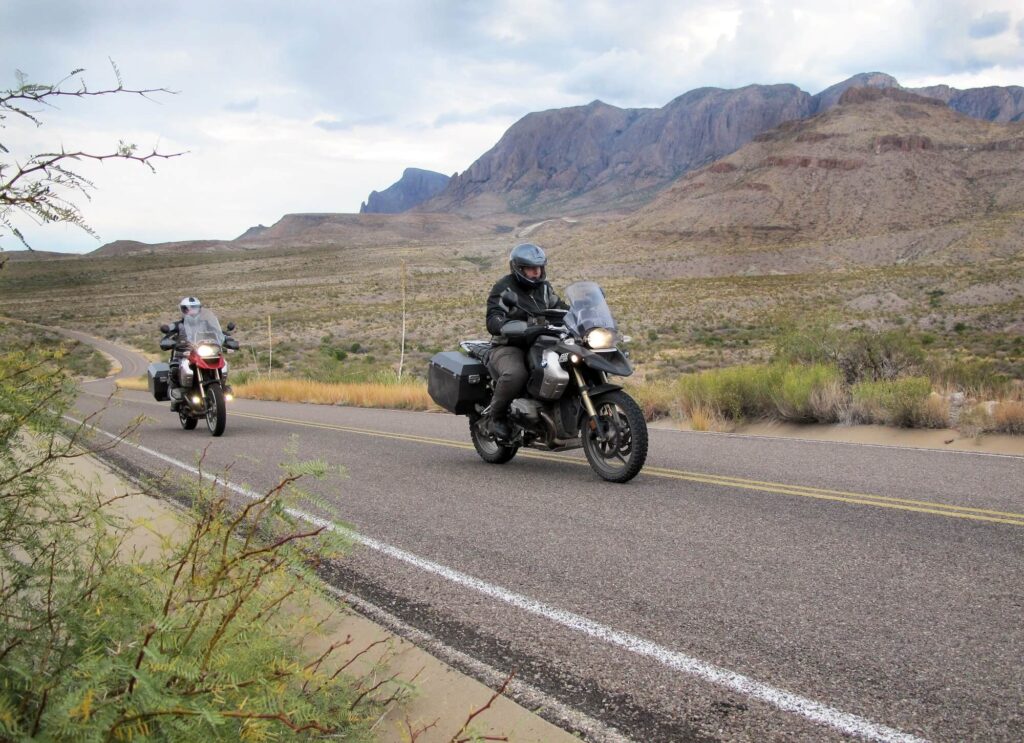
I would find it impossible to name my favorite national park, among so many splendid places (truly America’s crown jewels), like Death Valley, Yellowstone, or Bryce Canyon, but if I did try, Big Bend would be a contender. Other than Death Valley, it is also the national park I have most frequently visited.
Brutus and I first passed that way back on the Test for Echo tour, the first concert tour I did by motorcycle, in 1996-97. In March, 2003, it was the destination on the car trip that became the centerpiece of my “musical autobiography,” Traveling Music. Since then I had led Michael there two or three times, often staying at the same fine resort in nearby Lajitas where Brutus and I had stopped for breakfast that first time.
It was Brian’s first visit to Big Bend, and his first time seeing much of West Texas — our three-day journey would cover a thousand miles of Texas backroads between Van Horn and Dallas. Brian was usually content to ride behind Michael and me, and being on my spare bike (red, like every motorcycle I have owned), he called himself “the little red caboose.”
When I led Michael and Brian up to the Chisos Basin area of the park, with its monumental rock formations and winding switchbacks, Brian said, “Mountains in Texas! Who knew?”
I pointed over to Emory Peak, which I had hiked up during the Traveling Music journey in 2003, and told him it was almost 8,000 feet. Yet the Guadalupe Mountains to the north had a few peaks that rose even higher. Texas most assuredly has mountains. It’s got pretty much everything.
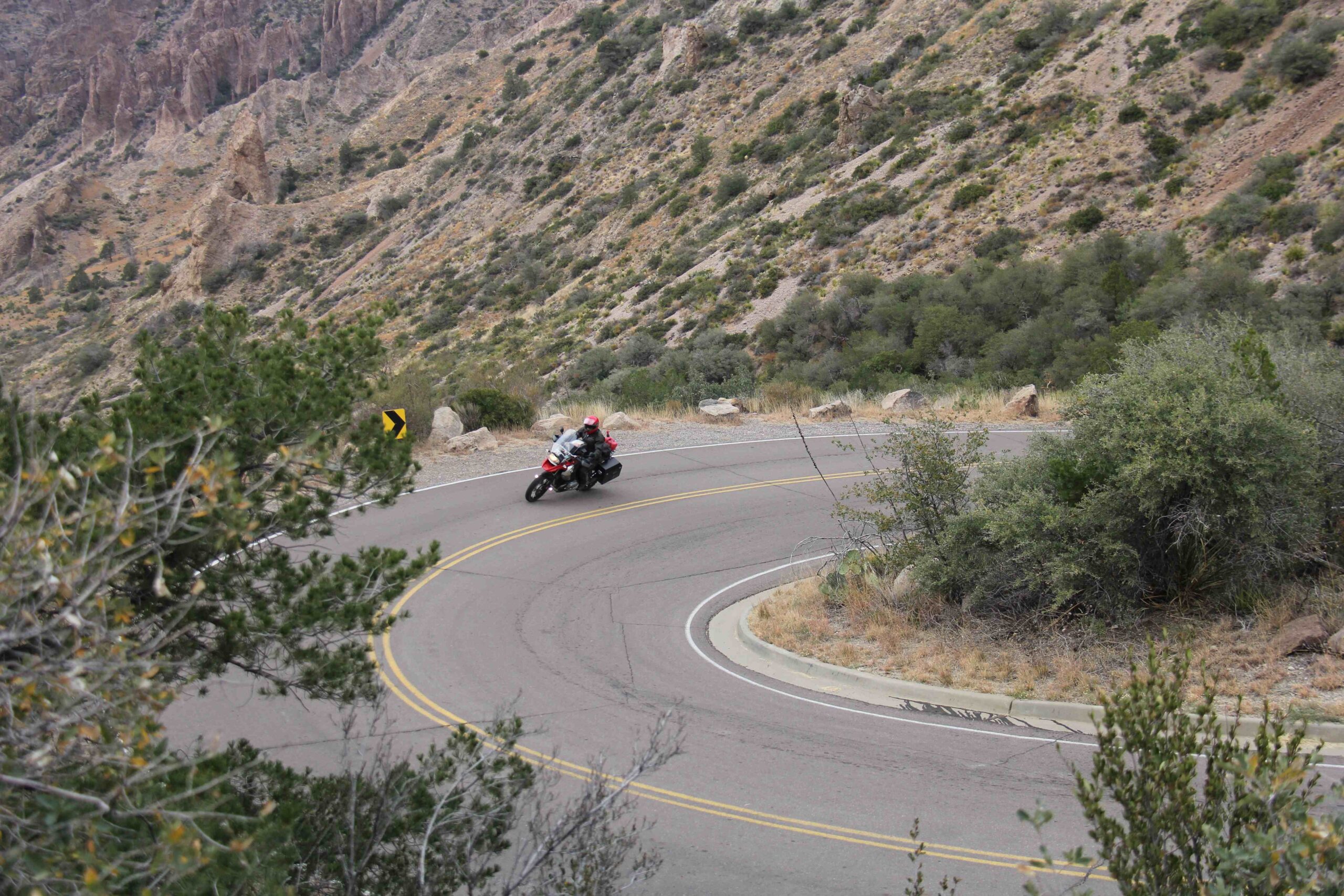
Photo by Michael Mosbach
Writing about Texas reminds me of trying to write about Africa — hard to describe to people who have never been there, or even to those who live there and haven’t seen much of their homeland. The Big Bend area may be the most spectacular, but I also love the vast expanses of West Texas, the Gulf Coast around Corpus Christi and Padre Island, and east toward Louisiana, with bayous and cypress trees, the Piney Woods north of there, and the Hill Country west of Austin.
Texas truly is a country unto itself, beyond all the clichés, and its people are equally varied and unique. For example, it still remains true that rural Texans are the most courteous drivers in the country, perhaps in the world. Riding the two-lanes (which Brian was also delighted to see posted at 70 mph), cars, pickups, and larger trucks will pull right onto the shoulder as you overtake them. Sometimes you’re not even thinking about passing them yet, but are willing to cruise behind them for a bit, but when they pull over like that, you feel you have to go by — always with a big wave.
Some readers might be surprised to learn that law enforcement is equally relaxed in Texas — especially compared to police states like, say, Ohio. In maybe 20,000 miles of riding in Texas over the years (over 2,000 just that week), I only remember being pulled over once — back in ’97 with Brutus. Even then, the officer was friendly and let us go with a warning. Generally, if you respect the towns and villages, as we always do, you’re not going to have a problem on the open roads. I have never encountered a speed trap in Texas, except on the interstate — and those speed limits are so high (80 on the long rural stretches), you’ve got to be pushing pretty hard to get into trouble even there.
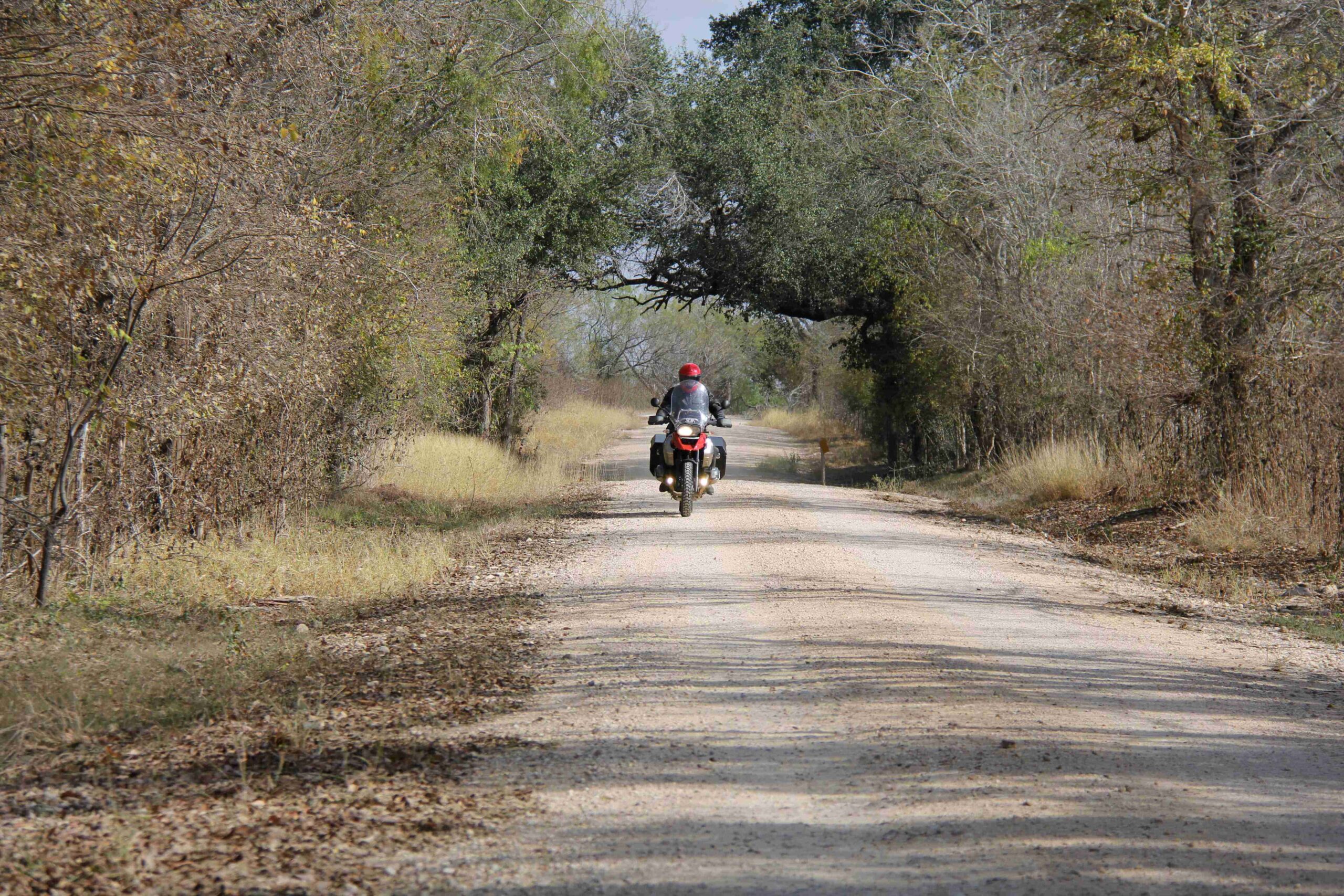
Photo by Michael Mosbach
Another part of Texas Brutus and I explored on that first tour was its most southerly region, south and west of Corpus Christi. That time we rode down from San Marcos, and stopped for breakfast at a tiny crossroads town called Tilden. I believe that was in November, too — sixteen years ago. I want to retell that story here, as recounted in Traveling Music, because now it has a different ending . . .
Somehow the open spaces on the map of South Texas had led us to expect a desolate land, but it was obviously fertile, and artfully cultivated. Plow and disk harrow had combed the brown soil into neat contours and swirls, like a Chinese garden, and the fields lay in elegant fallow. With my farming heritage and farm-equipment background, I had to admire this example of deft tractor-handling, and “excellence on earth.”
The farms gave way to arid, rolling ranchland, and dark herds of cattle hunched under the dull sky. A pair of hawks flew between the few bare trees, their plumage dramatically patterned in dark and light, like magpies. The scrubby ground-cover was green with the recent rain, and occasionally dotted with small oil wells, a prehistoric-looking “dipper” rising and falling in slow-motion rhythm.
. . .
Thoughts of breakfast were beginning to gnaw, and I was tempted by signs pointing toward towns a few miles off our route, where we might find a diner. Many of the towns in that part of South Texas had names like Peggy, Nell, Rosita, Alice, Christine, Charlotte, Marion, Helena, and Bebe, and I imagined lonesome cowboys pinin’ for the girls they left behind. (The female population of frontier Texas, like all the West, was probably half wives and daughters, and half prostitutes.)
Brutus and I rode on, pinin’ for the diners we’d left behind. Finally we came to another little crossroads town, called Tilden, the seat of McMullen County. A new brick courthouse with a tiled roof stood on one side of the road, and opposite it, the Cowboy Cafe.
The walls inside were lined with rows of well-worn cowboy hats, each tagged with a name and year, and a poster for a ’50s Western movie starring Rex Allen, the “Oklahoma Cowboy.” A framed black-and-white glossy of Rex himself was autographed with folksy good humor, testifying that the Cowboy Cafe “filled us up real good.”
Brutus and I peeled off a few more layers of clothing as Willie Nelson played on the radio, then sat down to the strains of “Don’t Come Home A-Drinkin’ With Lovin’ On Your Mind.” This late in the morning, the Cowboy Cafe had only one other customer, a silent man in a straw cowboy hat hunched over his plate. A tiny Mexican woman shuffled to our table, her crippled body barely as tall as we were — sitting down. She wore a large, shapeless T-shirt reading “Always A Lady,” and her toothy smile and good-natured banter soon had us laughing with her. We looked at each other and smiled; this place was the real thing.
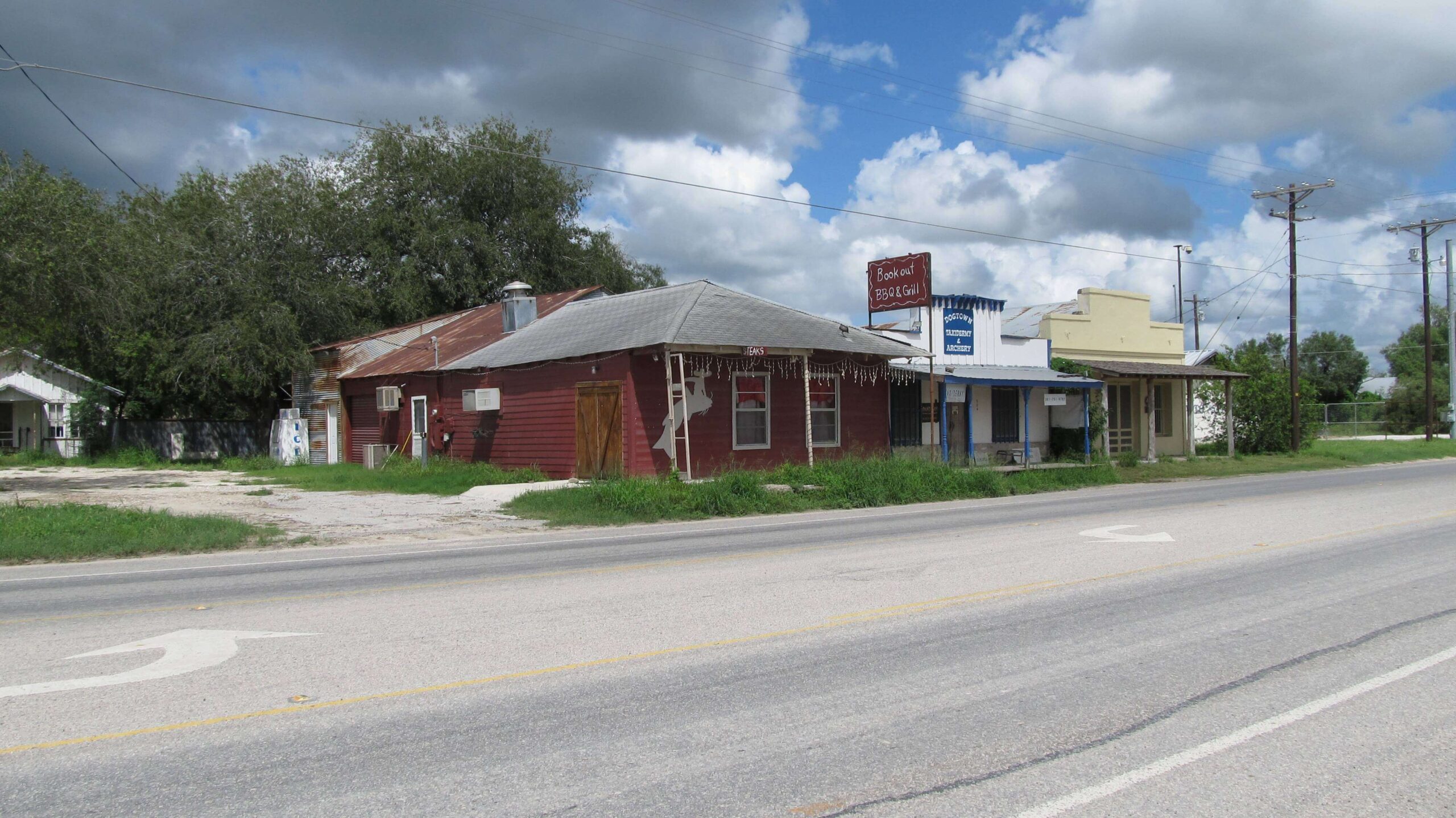
A tall, lean man came in, dressed in neat denim jeans and jacket, and a collared work shirt. He sat at the table beside us, saying “Morning, Gloria,” and after a bit of banter with her, he leaned over to us. He looked to be in his fifties, his smooth-shaven face refined-looking, only mildly weathered by an outdoor life.
“I see by your licence plates that one of you fellows is from Ontario.”
I raised a hand, “That’s me.”
He stood and introduced himself, shaking our hands. “I’m Johnny Nichols, and I run a ranch just down the road here. The man who first settled it was John Fitzpatrick, who come down from a place called St. Catharines. You know it?”
I laughed, “Sure do — I grew up there!”
“Right near Niagara Falls, right?”
I nodded, smiling.
“See, I’ve looked into it all.”
Johnny Nichols sat down again as Gloria brought his coffee, then continued. “Uncle John, we called him, he come over to Canada from Ireland in the 1860s. He wanted to come down here then, but the Civil War was on, so he started farmin’ up there. Then once the war was over, he worked his way down the Mississippi on the log booms, all the way to New Orleans, then made his way over here, and started runnin’ sheep. A couple-a years later, his younger brother Jim followed him down, but one cold morning his horse was kinda skittish, and it reared up on him. Jim was tryin’ to hold on, and his hand come down on the hammer of his gun and he shot himself in the leg. Died of blood poisoning.”
We made the appropriate grimaces of sympathy and shook our heads.
“Then old Uncle John, he’d been battlin’ with this neighbor of his for a long time over water rights, and things started gettin’ bad. They all used to stay out on the range in tents, you know, and one day this neighbor come ridin’ into Uncle John’s camp, shootin’ and hollerin’, and Uncle John shot him out of the saddle, dead.”
He paused for effect, then added, “But he got off for self-defence.”
. . .
Then Gloria brought his breakfast, and a couple of other ranchers came in and joined Johnny Nichols at his table. All of them looked the part of ranchers and cowboys in their denim jeans and jackets, high-heeled boots, and hats.
. . .
Their conversation was sprinkled with the relative merits of petroleum, its color, pressure in pounds-per-square-inch, and the percentage of water they were pumping. Johnny Nichols shook our hands again as we left, and just south of Tilden we saw the sign arching above a sideroad, “Nichols Ranch, Est. 1879 by John and Maggie Fitzpatrick.”
Their ranch had been established by “Uncle John” Fitzpatrick, who had made his way down to Texas from St. Catharines, Ontario, my hometown, way back in 1866. From then on that little crossroads town and county seat of Tilden, Texas, took its place on our “mental maps” for good, and we would never forget the Cowboy Cafe, or Johnny Nichols, or Gloria, or even Rex Allen, the “Oklahoma Cowboy.”
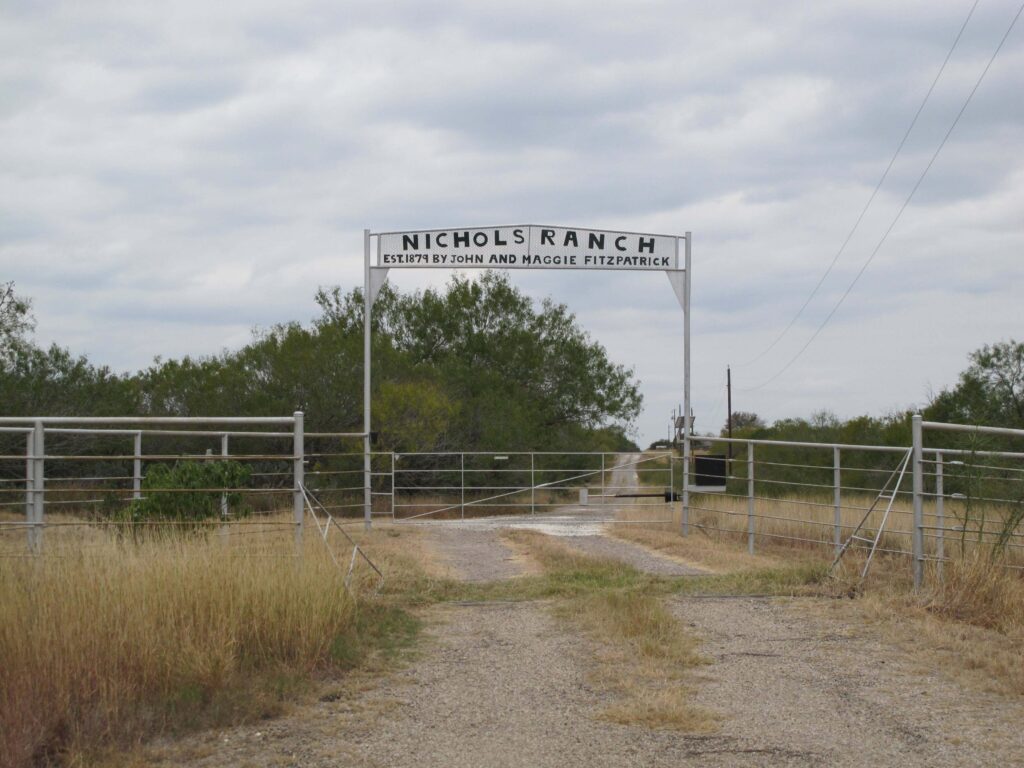
The reason for that long digression (apart from correcting the spelling of “Nichols,” and the wording on the sign), is because it describes a place and people that are now completely gone.
In the years since that first visit, I have often routed Michael and me through Tilden. It made part of a nice ride toward Padre Island, where I liked to stay between shows in East Texas. (Even just for the music of the surf through my open door all night.) On my second ride through Tilden, early in the 2000s, I was sad to see the Cowboy Cafe closed (replaced briefly by a barbecue place, which was also closed on my next visit a couple of years later). But the little town and the surrounding landscape of mesquite ranchland remained pleasant to travel through, on long straight two-lanes with little other traffic. As recently as June, 2010, I had passed through and found it unchanged.
This time, it was all different, and after what I had witnessed in Western North Dakota back in September (see “The Better Angels”), I knew immediately what was going on. It was those frackin’ frackers. What Johnny and his fellow ranchers had been doing the old-fashioned way, pumping up a little oil more-or-less as a sideline, was now a vast industrial complex pumping chemicals two miles down to smash the oil out of the rock — “hydraulic fracturing,” or fracking.
The West Dakota boom, on what was called geologically the Bakken formation, had been going for three years, while this South Texas operation, on what was called the Eagle Ford formation, had to be less than two. Doing some online research, the only date I found was 2011, so maybe only one. The machinery of modern fossil-fuel extraction moves swiftly, and massively. Hundreds of semis, crude-looking tankers and construction gondolas, crowded the little highways, warping the pavement into lumpy black dough that pounded us on the bikes. The mesquite scrub was lined with new fences of white steel pipe, pierced with dozens of gateways and raw gravel roads. Travel trailers stood at the gates with security guards in Hi-Viz vests, checking trucks in and out. Plumes of flame belched from high steel stacks, burning off natural gas, and vast construction sites for processing and storage works — enormous tanks, pumps, and pipes — were scraped out of acres and acres of mesquite. A huge truck stop was under construction near Tilden, and the ramshackle buildings that had housed the Cowboy Cafe were gone — completely obliterated.
The next town south, Freer, seemed to be the center of the boom, as it was of the region. Freer was surrounded by improvised RV parks spread out on acres of bare gravel, offering electricity, water, and — one hopes — septic tanks. Multiple signs advertised for truck drivers, and a brand-new Best Western glared with fresh paint in its unfinished gravel lot. Other construction sites rose up like broken teeth.
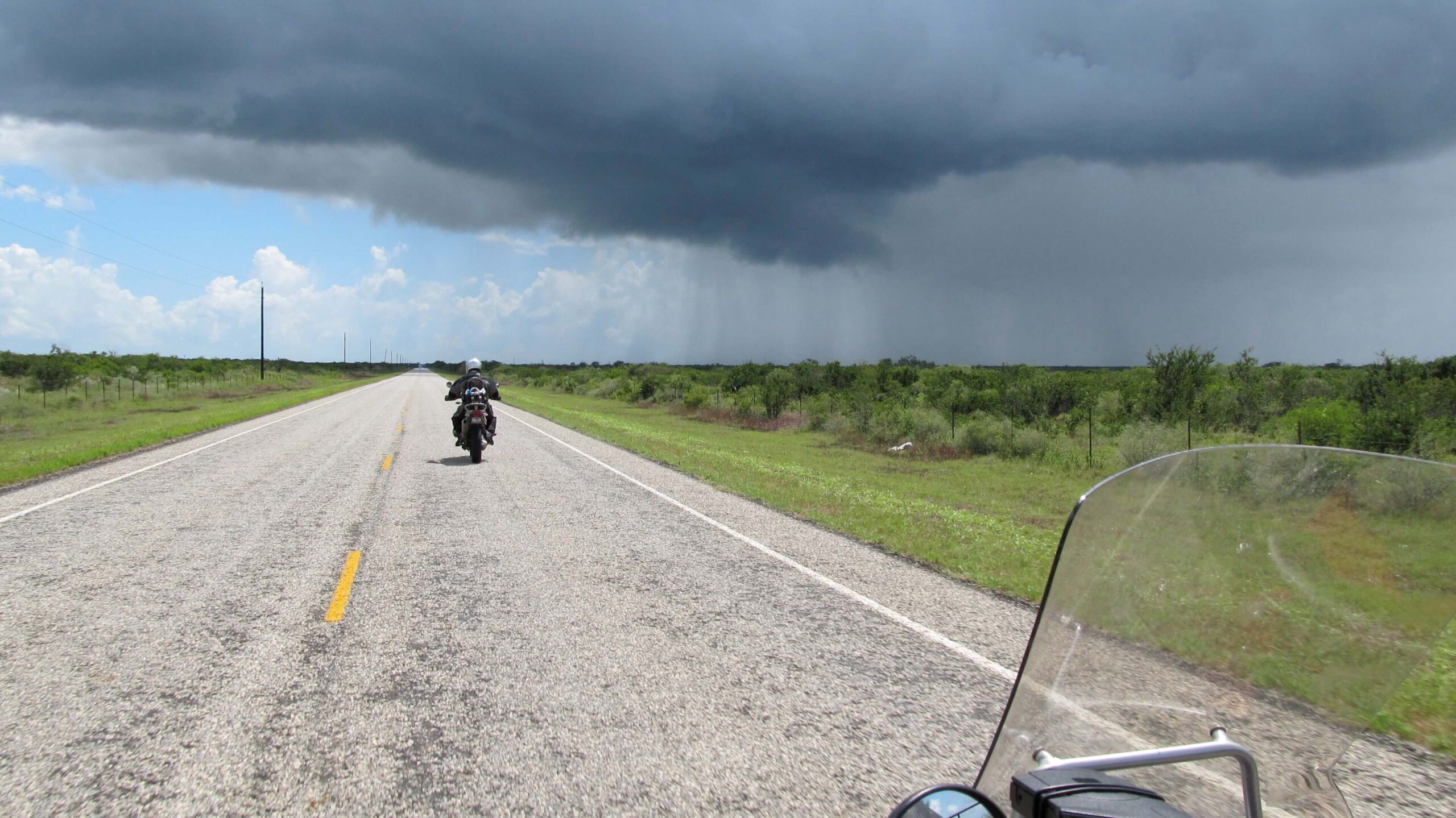
Calm and Timeless — before the Approaching Storm . . .
As I observed earlier about not taking pictures when things get too hairy, that is also true when things get too ugly. I hadn’t taken any photographs of the devastation in West Dakota that time, and the only one I took around Tilden this time was the Nichols Ranch gate.
Comparing it with a similar photo I took in 2010, the fence of barbed wire and wooden posts had been replaced with the white steel pipes, but the most telling difference was the mailbox — gone now. Sad symbolism. No doubt before long the sign will be gone, too. Johnny and his family, like all the rest of the ranchers who once ran their cattle and pumped their watery oil above the Eagle Ford formation, don’t live there anymore. (Echoes back to something I wrote in “The Better Angels,” “The saddest roads in America are the ones where people used to live, but don’t anymore.”)
As I rode south from the old Nichols ranch on that pounded (and pounding) road, I felt sick to my stomach, and even a little prickly around the eyes. A place I loved like an old song, like an old friend, had been devastated. Nothing more than a sleepy little cowboy town, and some lonely two-lane roads between hardscrabble ranches in the mesquite scrub — but it had meant something to me. The mess in West Dakota had been shocking and appalling enough, but now it was personal.
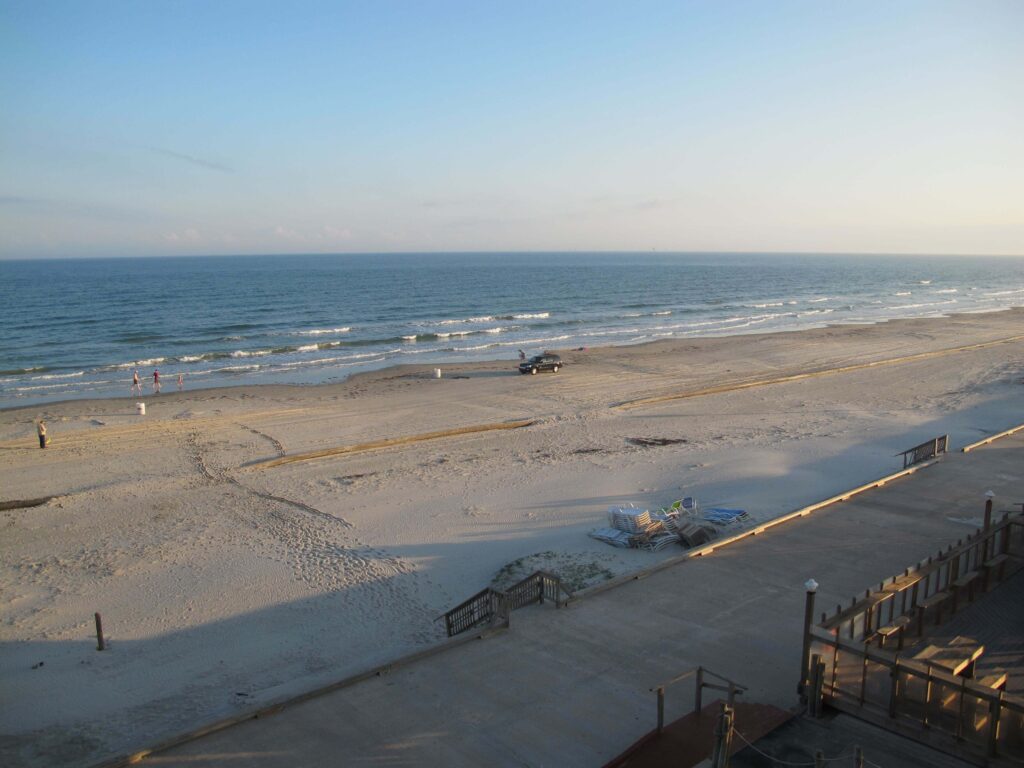
Modulating to a more positive key, Michael and I ended the day with this view of the beach on Padre Island. (Yes, Texans drive trucks on their beaches — but I’m sure they still pull over to let you pass!) In late November, the beach chairs were piled by the concrete boardwalk and drifted around with sand. The offshore oil rigs were a further reminder of what I had seen that day, and the pipeline running across the beach seemed ominous — but apparently it only carried sand and water, to replenish the beaches after storms. And in the warm night, the waves murmured their steady, rhythmic music.
* * *
And getting back to music, as I would have to do the next day in San Antonio, the three shows in Texas marked the end of this year’s part of the Clockwork Angels tour. For a few months we would be saying goodbye to our touring world — which, for me, centers on the bus, the Bubba-Gump room, the daily motorcycling, the backroads and motels, and, of course, the stage.
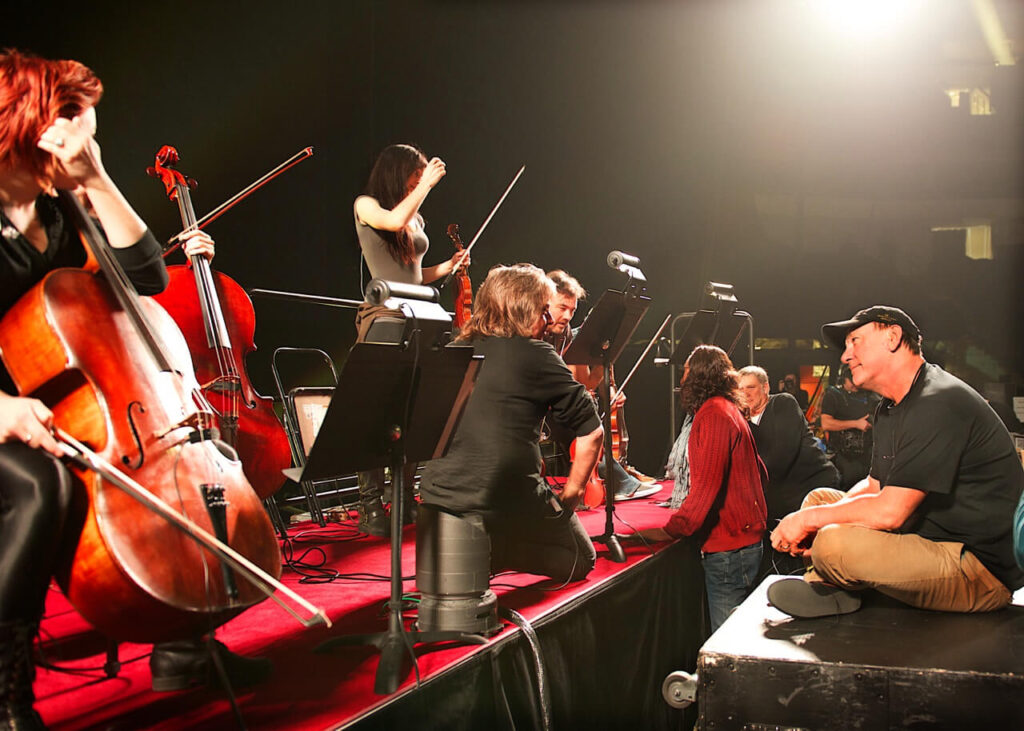
Before soundcheck at the final show, in Houston on December 2, the three of us gathered in front of the string players, which had become a daily custom. After they had tested their instruments and monitors, and before we all played together, I would sit cross-legged on the subwoofer behind my drums, while Alex and Geddy came in from their sides of the stage and we talked and joked for a few minutes with the “stringers.”
By now the soundcheck routine was well established. Together we played the first half of “Clockwork Angels” and the first half of “Red Sector A,” which checked out everybody’s various “systems.” Then the three of us gave sound engineer Brad the beginning of the opening song, “Subdivisions,” so he was set for the start of the show. When Brad had heard enough, he would shoot up his hand for us to stop, and that became a game among us — watching for that upraised hand, and stopping immediately, laughing as we all froze on the same beat.
After soundcheck, dinner, and my warmup in the Bubba-Gump room, I changed into my “stage costume” and walked with Michael down the hallway to stage left. It was showtime — one more time.
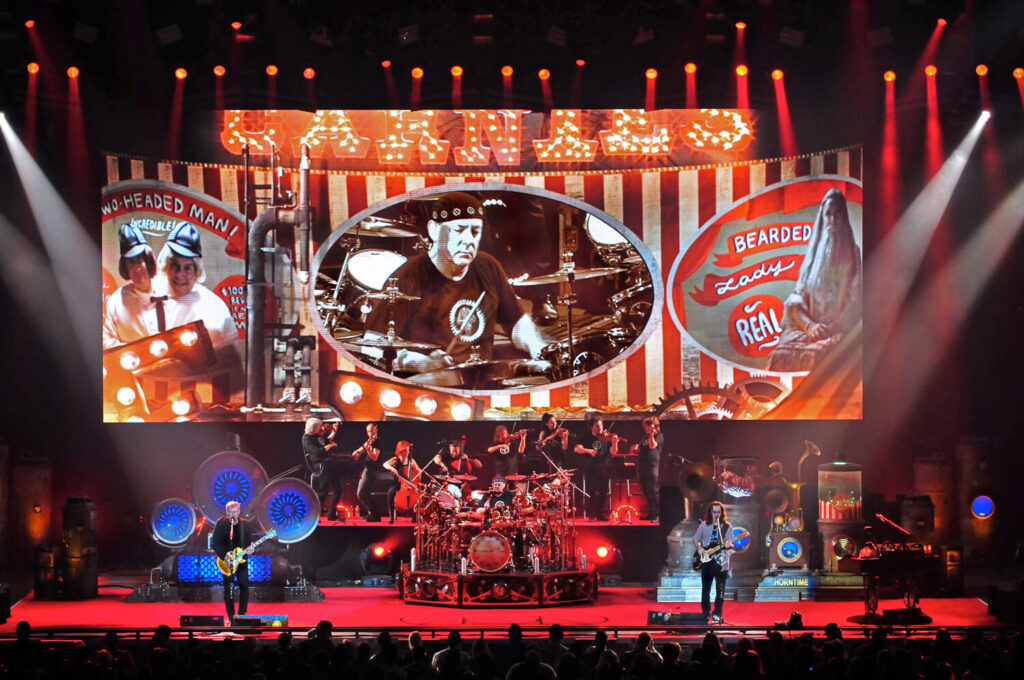
One fun feature I have added to my performance this tour is the “T-shirt gun.” For many years, at the beginning of our encore, Alex and Geddy have carried out baskets of bundled T-shirts and tossed them out to the crowd. That never appealed to me — not feeling comfortable in front of my drums — but somewhere I must have seen one of the air-powered guns that are used at sporting events to shoot souvenir T-shirts into stadium crowds. That, I thought, might be fun.
Michael soon took over as my weapons-handler, while John “Boom-Boom” Arrowsmith, our pyrotechnician and daily-events photographer, prepared the “ordnance” (T-shirts tightly bundled in fluorescent tape — so people can see them coming!). I run out for the encore, and Gump hands me the loaded gun. I climb up on the strings riser, and wait for the lights to come up on the audience (again, I want people to see the flying shirts — don’t want anyone getting hurt). I fire the first two rounds, then bend down to let Michael reload while I turn the dial to prime the pressure. Soon we had it down to a tight routine, and were getting off four separate shots. Then I would lay down the gun and scramble across the subwoofer to the drums, ready to start “Tom Sawyer.”
At first I was shooting T-shirts with my “yearbook” photo from the tourbook — created by Geddy for all three of us on an app called Oldbooth — then one with my “g’nome” character on the front, and finally a West Side Beemer Boyz version, with a riding shot on the front, and one of my favorite maxims on the back, “The Best Roads are the Ones No One Travels Unless They Live on Them.”
Here is a great shot by Boom-Boom, showing the first shirt in flight, and the second just leaving the muzzle. Michael waits to load the last two shirts.
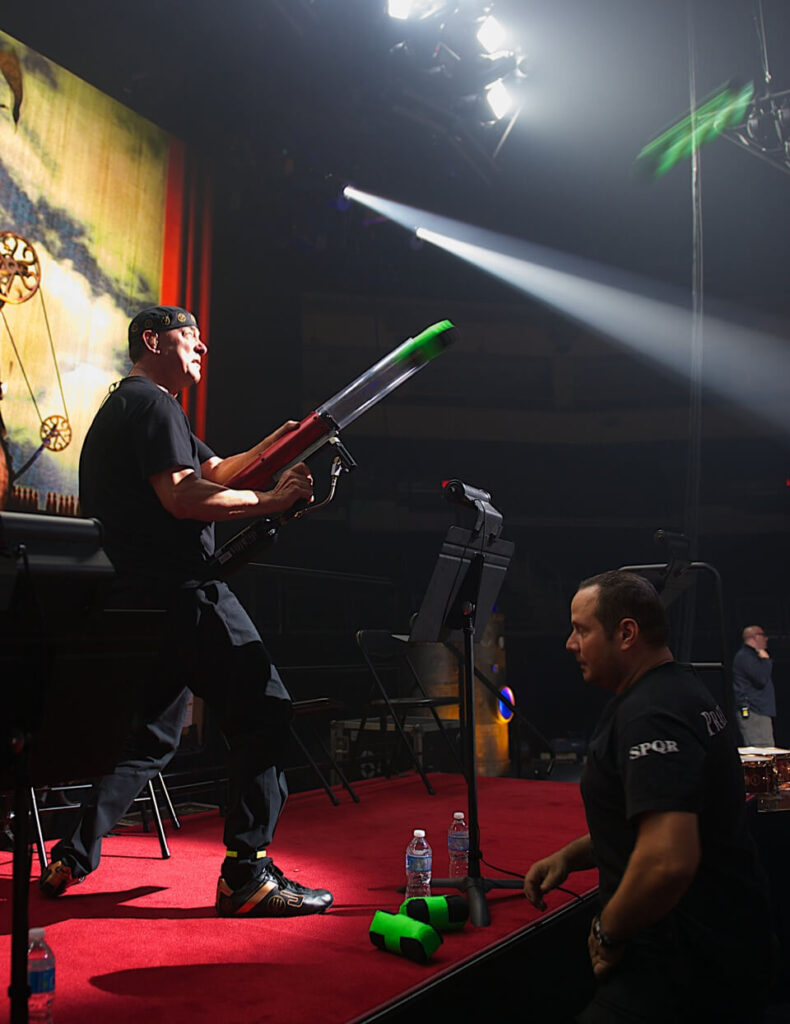
One aspect of my “distribution system” that particularly pleases me is that my T-shirts go high into the crowd — “far and away” — into the less-expensive seats. Consequently, I have never seen anyone down front wearing one of them at another show, as I regularly see the ones Alex and Geddy toss into the front rows.
After thirty-five shows, and 13,632 motorcycle miles, we finished the Houston show on a very high note, so to speak. The performance itself felt triumphant, and after, we gathered with the stringers for a champagne celebration. It was the first time I stayed after a show on the whole tour, and a couple of the stringers joked that they were used to seeing me as a blur on my sprint to the bus.
A few nights earlier, when we were filming some shows for an eventual concert DVD, director Dale had a cameraman trying to capture my flight. He caught a comment from a female security guard, an older lady with a broad New York City accent. She turned in amazement as I ran past, and gasped,
“Oh my god! He runs faster than Britney Spears! And she was running full out!”
But on this night I stayed behind, and raised a glass to my bandmates — all ten of them! Geddy proposed a toast to the stringers, and said that not only did we love their contributions musically, and the energy they brought to their performance, but they were fun to hang out with, too.
He nodded toward me, and said, “I’ve never seen him so happy on a tour! He’s been . . . Mr. Goodvibe!”
Nothing wrong with that, obviously, but I was a little mystified. I hadn’t actually felt any different. Maybe the “deeper currents” of my being were calmer; my inner compass steadier — I don’t know. Fundamentally, I liked the way I was playing, and felt strong and consistent from night to night. I was beginning to master the improvisational mode I had been pursuing for several years — and in three different solo contexts throughout this show. (Michael calls the third one, on the electronic drums, the “Binary Love Theme.” He says that’s where I play the “love notes,” as opposed to the “hate notes” on the acoustic drums. Or the “gay notes” on the piccolo snare. He is a very disturbed man.)
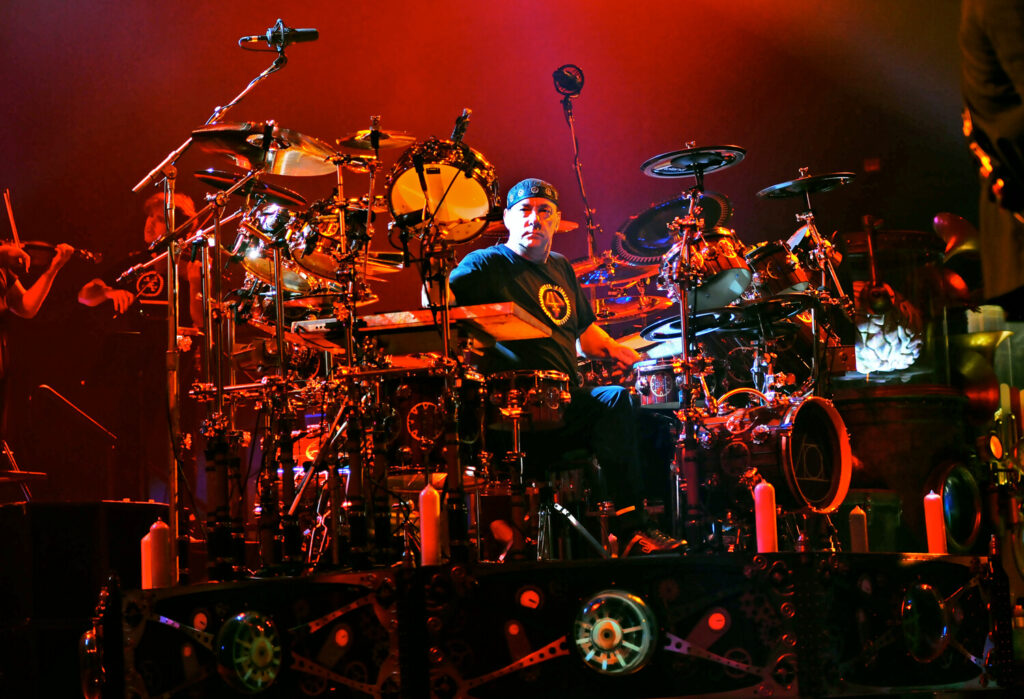
Photo by Craig M. Renwick
Just before soundcheck at the Seattle show, I recorded a radio interview with Michael Shrieve (veteran drummer with Santana, Go, Automatic Man, and more). In my early drumming years, Michael was a strong influence on me — his legendary solo with Santana in the Woodstock movie a formative paradigm. All these years later, drums were a kind of religion that the two of us shared — we could easily have talked for hours. During our conversation, Michael mentioned the resonance for him of a quote I had used in Bubba’s Book Club.
“The most valuable of all education is the ability to make yourself do the thing you have to do, when it has to be done, whether you like it or not.”
(I didn’t remember the source, until Michael told me it was Aldous Huxley, from my review of his novel, After Many a Summer Dies the Swan.)
So, considering my recent life in those terms, for all those months I had been doing what I had to do — my job. But I had also been doing what I wanted to do: making that job as interesting, challenging, and rewarding as I possibly could. (Everyone knows it doesn’t always go that way.)
Musically and visually, I was proud of the show we were presenting — the overall production, and aspects like the alternating sets, with a few different songs from night to night. After thirty-eight years together, I was confident that Clockwork Angels was our masterpiece, and I felt that the string section during those songs elevated our whole “presence.” Drum tech Gump had been keeping our elaborate setup perfect, and any glitches had been few and minor. With regular treatment and a brace when I played, my aching elbow (“lateral epicondylitis”) had held out for the duration, without inhibiting my playing. (I think I wrote once before, “If I’m not happy on the drums, I’m not happy anywhere.”) On my bus, Dave and Michael and I had a comfortable routine, and my motorcycle explorations had been entertaining and rewarding.
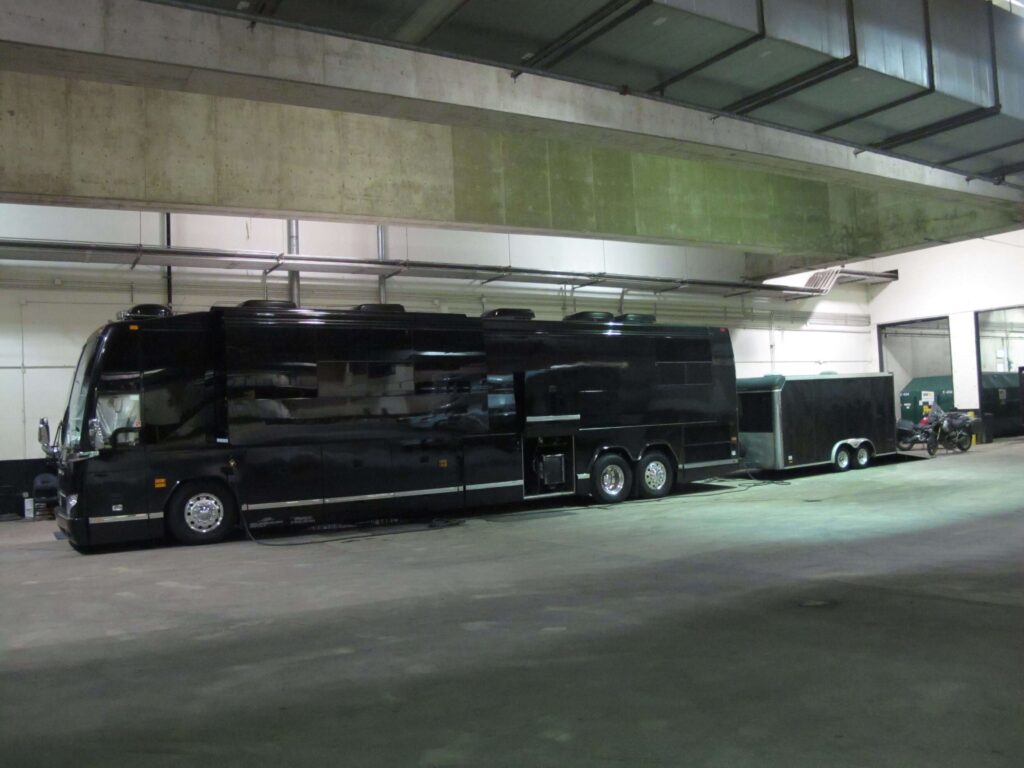
And now I was going home to my family for a nice long rest, before starting up again next spring and summer. Soon three-year-old Olivia and I would be walking down the streets of our neighborhood, singing a new song we made up together:
“I’m so happy —
I’m so happy —
I’m so happy — to be with you!”
Somehow I know that when Michael rides behind me again, in a Midwest monsoon, a snowy Oregon road, or a cloud of Wild West dust, he will sing that same song. But with some bad words added . . .
